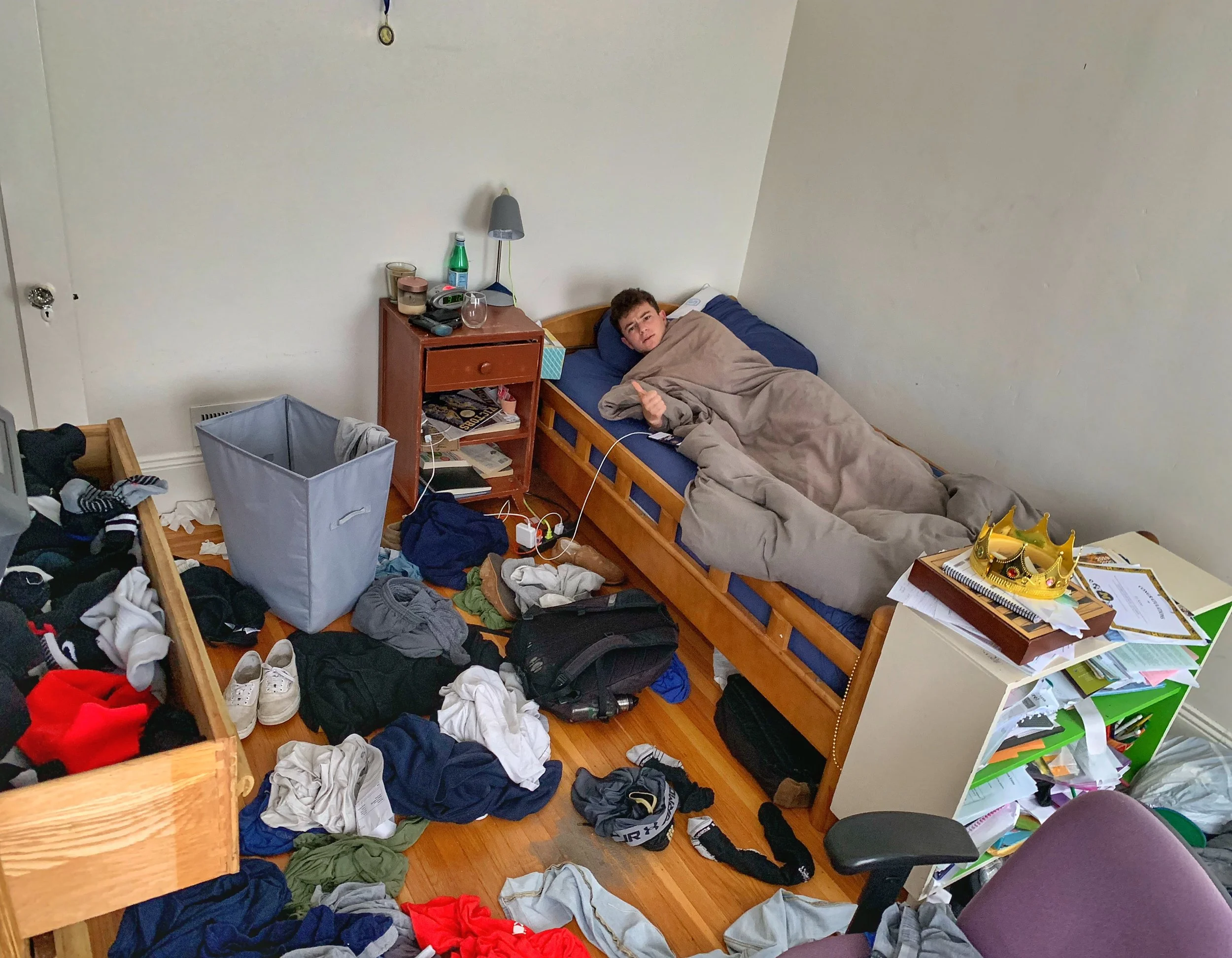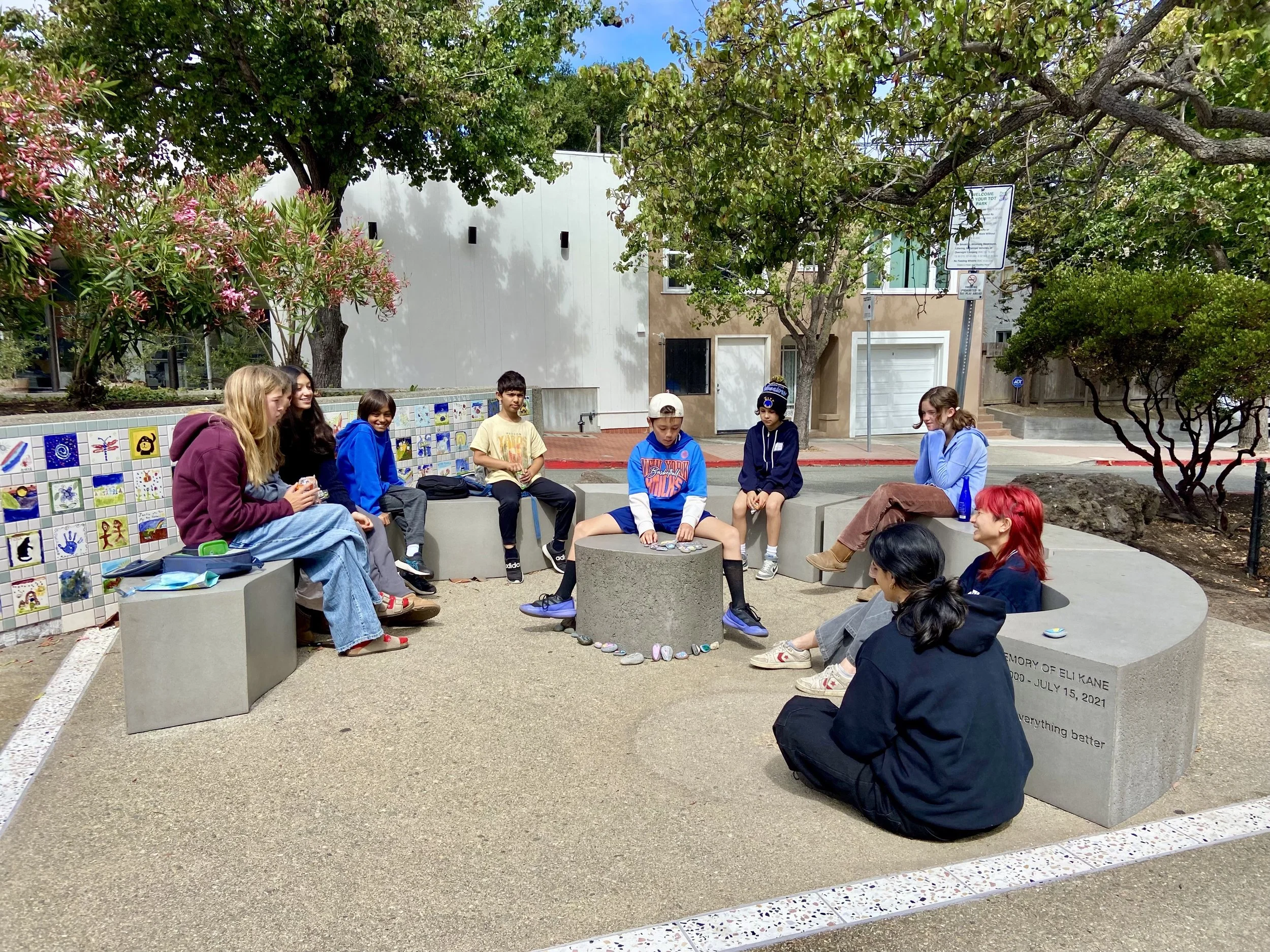A Tuesday in San Leandro
One week after Eli died, a woman knocked on our door and presented us with a royal blue flannel bag.
Inside the bag was a box made from soft gold sheet metal.
It was the size of a children's shoe box and oddly heavy.
Through tears, I thanked her, went inside, walked straight into Eli’s bedroom and placed the box on a shelf, where his remains remained, untouched, for three years and nine months.
Three years and nine months later, on a random Tuesday in April, I walked the box out of his room, placed it in the trunk of our car, and drove to San Leandro.
—————————-
Eli never had a strong connection to his bedroom.
For most kids, it’s a personal sanctuary, a reflection of their identity and growing independence. Behind closed doors, it’s the first space where they feel ownership, control and a sense of privacy.
But for Eli, his room didn’t carry that kind of weight. He never really claimed it as his own or felt strongly about it.
And his door was always open.
As a pre-teen, he decorated his walls with soccer posters and artwork, but that didn’t last. Throughout his teenage years, the walls were bare, and his room showed little reflection of who he was.
To him, it was purely a functional space where he slept, regularly admired himself in the full-length mirror, and stored his clothes – everywhere. His room was a pigsty, surprisingly so, because outside of it, he wasn’t messy at all.
His sense of self was rooted in connection, not seclusion, and his bedroom was just a pit stop between the moments that really mattered to him.
He naturally gravitated to the shared spaces in the house, where life and conversation happened and he could be with people, talking, laughing, connecting. (In addition to the shared spaces, most of his time was spent in Jesse’s room. Specifically, in Jesse’s bed, with Jesse in it.)
Then, he died.
I have no memory of why we made the decision to cremate him. But, that choice meant he was in a box, in his room, rather than in a place where he could be with people.
Where we could be with him.
And over the last three years and nine months, as much as I tried not to, whenever I stepped inside, walked by, or even thought about his bedroom, I couldn’t help but feel guilty that he was in there, alone, and he shouldn’t be.
The weight of it.
Nan and I drove to San Leandro, a small East Bay town 25 minutes from home, to take part in the final casting of Eli’s memorial bench, the centerpiece of a public plaza enhancement project in Berkeley.
We pulled up to the concrete contractor offices, located at the end of a non-descript cul-de-sac, just as I finished googling, “Are human remains toxic?” and were escorted into a large warehouse space that housed an oversized industrial mixer, filled with wet concrete that would ultimately become the bench.
It looked heavy. Very heavy.
We were kindly told to “Take as much time as you need,” and were left alone with the mixer.
We opened the gold metal box, then the bag that was inside the box, reminding each other that this wasn’t ceremonial.
It was intentional.
We had to do this. For us, for Jesse, and most importantly, for Eli, who shouldn’t be alone in his bedroom any longer.
I was surprised by the texture, expecting the feeling of soft ash, powdery, like from a fireplace. But it was gritty. Coarse. Like fine gravel, sand or ground stone.
We took turns putting our hands in the bag and dropped handfuls into the bucket that contained the cement, making one million percent sure that it (he?) went into the mixer, and not on the floor of a concrete contractors warehouse in San Leandro.
Then, we were done.
We hugged each other tightly, and walked back to the car, hands covered in ash, in the lines of our palms, under our nails.
This was as close as I was going to get to holding him again. I wanted the ash to seep into my skin.
On the car ride home, my hands felt uncomfortably dry, and without thinking, I wiped them off onto the jeans I was wearing, which happened to belong to Eli.
Nan dropped me off at BART and I went to work. She took our dog for a walk.
At that point, I was reminded that yet again, despite the most horrible of circumstances, we have no choice but to wipe our hands, go to work, walk the dog, put one foot in front of the other, and every day, try to get to okay.
And, on this particular Tuesday in San Leandro, I was also reminded, yet again, that Eli is gone forever.
But now, he’s also part of something permanent.
On a random Thursday a few months later, we visited the bench and found a group of teens gathered around. Some were sitting, others were leaning against it, forming a loose circle. Another day, we watched a group of young kids climb up on top of the bench, and jump from section to section over and over again, playing a game they had just made up.
Talking, laughing, connecting.
None of them knew who Eli was, but they were all with him.
And Eli was with them.
In a shared space where life happens.
And every day, I get to be with him, too.
Remembering.
July 2025

